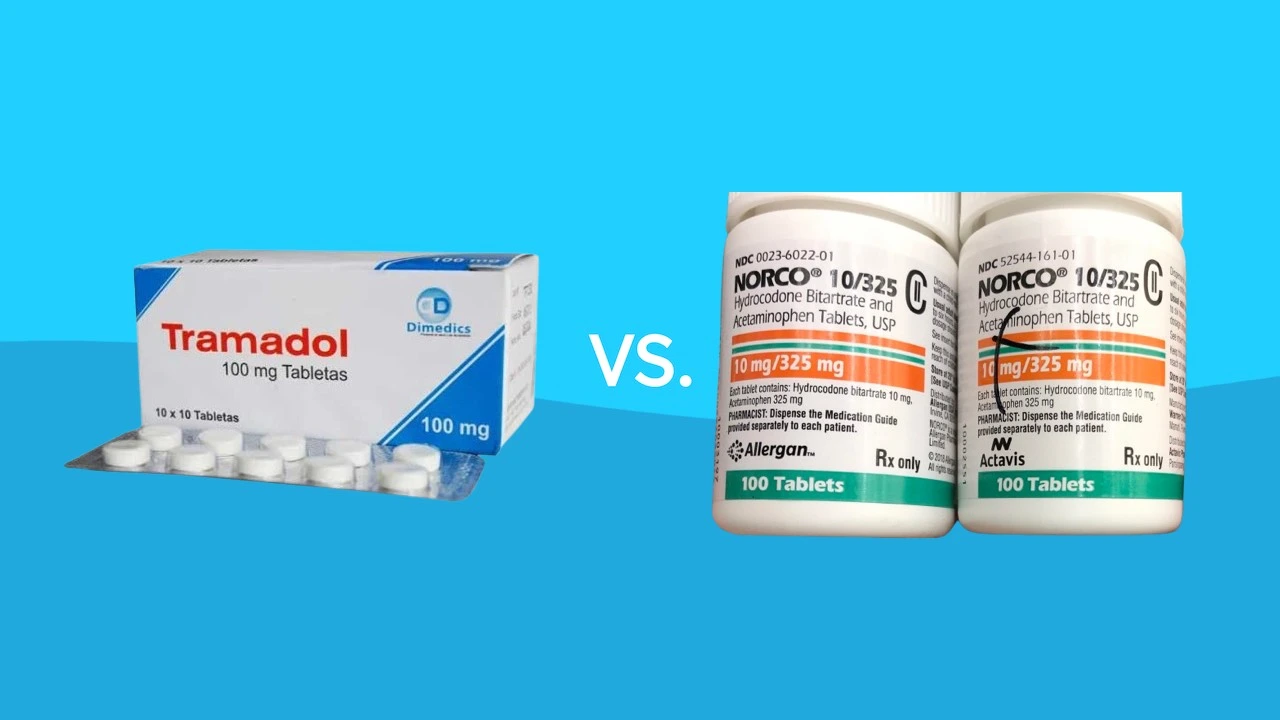Two widely prescribed opioids, tramadol and Norco (hydrocodone with acetaminophen), have become popular choices for managing moderate to severe pain. While both are effective, they have distinct characteristics and potential side effects that patients and healthcare providers must carefully consider.
Tramadol: An Atypical Opioid Analgesic:
Tramadol is a synthetic opioid analgesic that works by altering the way the brain perceives pain. Unlike traditional opioids, tramadol has a unique mechanism of action that involves binding to specific receptors in the brain and inhibiting the reuptake of neurotransmitters like serotonin and norepinephrine. This dual action contributes to its pain-relieving properties while potentially reducing the risk of some opioid-related side effects.
Norco: A Combination of Hydrocodone and Acetaminophen
Norco is a combination medication that contains hydrocodone, an opioid analgesic, and acetaminophen, a non-opioid pain reliever and fever reducer. Hydrocodone works by binding to opioid receptors in the brain and spinal cord, reducing the perception of pain. The addition of acetaminophen enhances the pain-relieving effects and allows for lower doses of hydrocodone to be used, potentially reducing the risk of opioid-related side effects.
Prescribing Considerations:
Both tramadol and Norco are controlled substances, meaning they are subject to strict regulations and require a valid prescription from a licensed healthcare professional. The decision to prescribe either medication is based on various factors, including the severity of pain, potential side effects, and individual patient characteristics such as age, medical history, and potential drug interactions.
Potential Side Effects:
While tramadol and Norco are effective in managing pain, they can also cause side effects. Common side effects associated with tramadol include nausea, dizziness, constipation, and drowsiness. Norco, on the other hand, may cause side effects such as respiratory depression, constipation, nausea, and sedation. Both medications carry a risk of dependence and addiction, particularly with prolonged use or misuse.
Withdrawal Symptoms:
Abruptly discontinuing tramadol or Norco after prolonged use can lead to withdrawal symptoms. These symptoms may include anxiety, sweating, muscle aches, insomnia, and flu-like symptoms. It is essential to follow a healthcare professional’s guidance when tapering off or discontinuing these medications to minimize the risk of withdrawal symptoms.
Tramadol and Norco Comparison:
| Characteristic | Tramadol | Norco (Hydrocodone with Acetaminophen) |
| Mechanism of Action | Binds to opioid receptors and inhibits neurotransmitter reuptake | Hydrocodone binds to opioid receptors, acetaminophen enhances pain relief |
| Controlled Substance | Yes | Yes |
| Potential Side Effects | Nausea, dizziness, constipation, drowsiness | Respiratory depression, constipation, nausea, sedation |
| Risk of Dependence | Moderate | High |
| Withdrawal Symptoms | Possible | Likely with prolonged use |
| Any Discount? | Yes, Buy Tramadol Online | Yes, Out Of Stock |
Conclusion:
Tramadol and Hydrocodone (Norco) are both effective pain management options, but their distinct characteristics and potential side effects must be carefully considered. Healthcare professionals must weigh the benefits and risks for each individual patient, taking into account factors such as the severity of pain, medical history, and potential for drug interactions. Proper education on the responsible use, storage, and disposal of these controlled substances is crucial to minimize the risk of misuse, dependence, and adverse effects.

